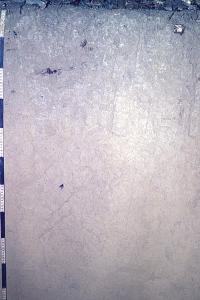| Ah 0-7 cm |
brown (10YR 5/3, moist), clay, weak to moderate very fine and fine subangular blocky to crumb, friable sticky plastic, many very fine pores, clear smooth boundary to, |
| AB 7-25 cm |
yellowish brown (10YR 5/4, moist), clay, weak moderate subangular blocky to porous massive, friable sticky plastic, many very fine pores, gradual smooth boundary to, |
| BA 25-48 cm |
brownish yellow (10YR 6/6, moist), clay, weak fine and medium subangular blocky to porous massive, firm sticky plastic, many very fine pores, diffuse smooth boundary to, |
| Bw1 48-85 cm |
brownish yellow (10YR 6/8, moist), clay, weak fine and medium subangular blocky, firm sticky plastic, broken thin clay cutans, many very fine pores, diffuse smooth boundary to, |
| Bw2 85-170 cm |
brownish yellow (10YR 6/8, moist), clay, moderately coherent porous massive, firm sticky plastic, broken thin clay cutans, many very fine pores, diffuse smooth boundary to, |
| Auger 170-250 cm |
(7.5Y no/no, moist), clay, moderately coherent porous massive, |
